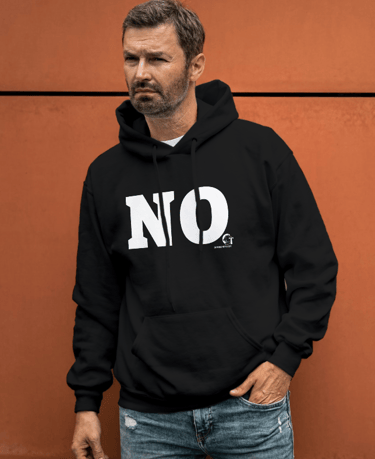Learn To Say "NO"
and "Yes" to your needs
MOTIVATION
In the latest blog post, we dealt with how we define and achieve our goals, where I advised listening to our surroundings. Often, friends or family know us better than we know ourselves. However, unfortunately or fortunately, this is not always the case. Now we face a new challenge: saying "no." In this blog, I want not only to shed light on how to decline well-meaning advice but also how to assert a firm "no" to requests. Saying "no" is a skill that must be trained, and at the same time, a necessity for our mental health, personal growth, and to avoid being taken advantage of.
According to a Statista survey, 61% of women and 57% of men find it difficult to say "no" to friends. The actual number is probably even higher. Who likes to admit they can't do something? Many of us want to be perceived as helpful and cooperative, which can lead to hastily saying "yes" and later regretting it. In the long term, this can lead to stress, overwhelm, and even depression when we constantly prioritize the needs of others over our own. It's important to find a balance and take our own needs as seriously as we do the urge to help or please others.
By saying "no," we create space in our lives for our own personal development. The first step is self-reflection. Take time to check your true feelings and needs. Ask yourself why you sometimes find it hard to say "no." Is it due to a fear of rejection, a desire to be liked, or do you simply feel obliged to say "yes"? Recognizing and setting boundaries is crucial. As you learn to establish and defend your boundaries, you can better decide when a "yes" is sensible and when a "no" is necessary. This goes hand in hand with setting priorities in your life. Consider what is truly important to you, and align your decisions accordingly. Develop habits like meditation, journaling, or simply quiet moments for yourself to become more aware of your own needs.
Once you recognize your motivations, you can start practicing saying "no." It's about expressing your thoughts and feelings clearly and directly. Using "I" statements helps to communicate your needs without criticizing or disappointing others. The "sandwich method" can be helpful, where a rejection is placed between two positive statements. This helps to soften the rejection while still respecting your own needs. It's also important to be clear and direct in your rejection to avoid misunderstandings. You can be grateful for the request yet remain firm in your decision.
Sometimes, it's helpful to give a brief explanation for your "no," but it's not always necessary. If you can't or don't want to say "yes" right away, you can offer alternatives or postpone the answer. If you can't help yourself, you might recommend other people or resources. This shows that you are still helpful and supportive, even if you won't be directly involved. For example, a friend asks for help with moving, but you have other plans and generally feel that you can't or don't want to help: "I'm glad you asked me, but unfortunately, I can't and don't feel like the right person to help. I'm thrilled about your new apartment. I can recommend a moving service, they even have insurance in case something breaks. You might be able to deduct the costs from your taxes. It would be faster and you wouldn't have to worry if something gets damaged."
To conclude with Matze's practical tips: Saying "no" to others sometimes means saying "yes" to yourself. But avoid the mistake of overdoing it. If you've said "yes" to everything in the past, you don't now need to compulsively say "no" to everything! Don't forget that our coexistence only works with love and mutual support. Also, don't forget the good feeling you get after helping or doing something good for someone. If you decide to help, do it only if you really want to, but without expecting anything in return. Because that's the definition of being a good person… stay tuned.





